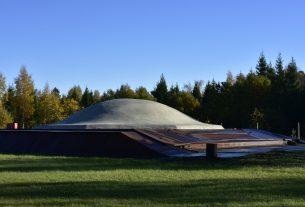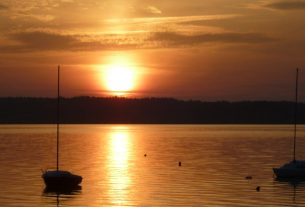LOCATION
The park is located in the north-west of Poland, at a place where the Lubuskie, Zachodniopomorskie and Wielkopolskie Voivodeships meet. The entire length of the river amounts to 185,9 km. The geographical location is 53°43′10″N 16°08′57″E.
SCENIC CHARACTER
Over 80 percent of its area is covered with forests – the great and monumental Drawa Forest stretching from the Drawa Lake District to the Noteć River. It is mostly made up of beech and pine trees. There are 20 lakes in the park, including the unique Black Lake, whose waters have three layers that never mix with each other. Also noteworthy is Lake Ostrowieckie, the park’s largest reservoir. In its center is an island that hosts a grey heron reserve. The Drawa Forest is home to roe deer, beavers, otters, boars, raccoon dogs, and even wolves. A large part of the forest has been included in the Natura 2000 European ecological network. The Park forests are dominated by pine, but there is also lots of beech, oak, and artificially introduced spruce. The rarest here are service-tree and yew. The course of the river begins in the Krzywe Lake and drains into Noteć river near Krzyż Wielkopolski. The River is passing several towns along its way including Złocieniec, Drawsko Pomorskie, Drawno. The Drava river basin covers 3296,4 square kilometres, crossing 19 lakes on the way. The most popular proposition of kayaking route is the section which starts in Czaplinek near Drawko Lake and finishes in Krzyż. The Park’s fauna is represented by over 200 species of vertebrates, among which the most numerous are birds. There also is an abundance of invertebrates, among which one finds some uniquely valuable endangered species.
ATTRACTIONS
The Drava river is similar to a mountain river with rapid currents. On the way, tourists can visit beautiful landscape of Drawsko Park and Drawa National Park, the most unique kayaking route in Poland. You may choose to go on a kayaking route for a one-day trip or stay for 8-10 days. You can go camping, but in the National Park of Drawa camping is allowed only in the specially marked places (Czasrnolas Hutniki, Przeborowo). The following lists of tourist attractions on the route include: a view of parks, a hydro-electric power station, ruins of castle in Złocieniec and a neogotic church in Rzepowo. Also, a perfect idea for active leisure in nature is easy and safe headwaters section which stars near Stare Osieczno village. This section is used for learning kayaking. Visitors can go to Tuczno castle. It is one of the Europe’s best situated Medieval castles. The old moat stands over the canals that connect several lakes, from where visitors can go on an unforgettable trip around the Drawa Lakeland. Also, visitors can visit Church of the Assumption of the Blessed Virgin Mary (Tuczno).
INFORMATION SOURCES
Heritage Class: [ N ] Natural Heritage
Subclass [NP] : National Parks and Other Protected Areas
WEB PAGES
http://dpn.pl/natur
https://pl.wikipedia.org/wiki/Drawa_(dop%C5%82yw_Noteci)
https://www.polska.pl/tourism/active-leisure/kayaking-through-poland/
https://www.podrawie.pl/splyw-kajakowy-drawa
http://www.kajaki.pl/river-in-poland,drawa,en,20.html
https://poland.pl/tourism/national-parks/drawa-national-park/
http://www.zamek-tuczno.com.pl/en/
https://en.wikipedia.org/wiki/Church_of_the_Assumption_of_the_Blessed_Virgin_Mary_(Tuczno)
https://en.wikipedia.org/wiki/Drawa_National_Park





